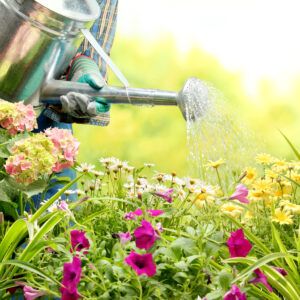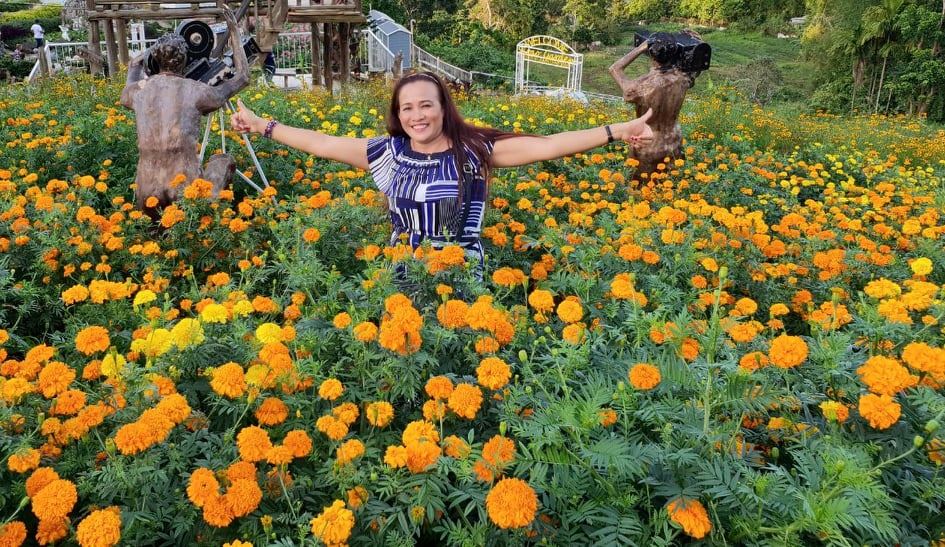Whether indoor or outdoor, plants can be beautiful and calming to the environment. But most people find it difficult to keep their plants alive. This is why this article will discuss ways that can help you keep potted plants watered.
1. For Indoor Plants, Choose a Potting Soil that is Best Fit for Them
Although it is fitting to use dirt from your yard to grow your outdoor plants, the same does not apply to indoor ones.
Indoor plants have more necessities than outdoor plants. So ensure you choose a soil that is appropriately fit for your indoor plants. Make sure the soil is made of slightly-packed soil particles and, at the same, tight enough to retain water for use.

- Every year or two, do well to change the soil you are using.
- Examine to ensure you choose a soil that fits the plant needs
- If possible, find a soil rich in nutrients for your indoor potted plants.
2. Ensure Your Plants Get Access to the Right Amount of Light
While some indoor plants need a lot of light for their activities, others wilt when they are exposed to excessive sunlight.
Those who need a lot of light place them near the window where they can get enough light. And for those that wilt off, place them under low light conditions.
Whatever the case, ensure your plant needs are met.
- Do not conclude that all plants need light from a window. Some plants can grow in low light conditions
- Ensure your plants get enough sunlight by checking the window you choose for your plants. This is because some windows are sunny, but after a few hours, they become shady
- You can use a UV lamp if your plants do not get enough sunlight.
3. Water Your Plants According to Their Needs

The plant varies in their need for watering. Some require daily watering, while some require weekly or monthly watering.
This is why you need to check out how much water your plants need. For example, when you frequently water a plant that does not need much watering, you cause the plant to die. Why? You have drowned the plant, and drowning leads to the death of the plant.
4. Prevent Pests
Indoor plants are not, particularly, safe from pests. This is because one time or the other, bugs may have entered your house. And these pests cause damage to the plant.
- Spray twice in a week with Neem oil to prevent pests such as mites or mealybugs from your plants
- Use chemical-free pesticides for indoor plants. When choosing a pesticide, read the label to ensure you pick the right product for your pests.

5. Choose the Right Pot
As your plant grows bigger, you also need to transfer it into a bigger pot that will fit its size. This helps to avoid twisting of the roots and also creates more room for extra moisture.
Apart from these, the pot must be of the right material that suits your plant needs.
For example, if you have a plant that needs a lot of water, you can use a plastic pot to pot the plant because it holds water. If you also have a plant that does not require little water, you can pot it using a clay pot.
When you transplant into another pot, shake off the dirt from the root and loosen the roots if entangled
- Select a pot of larger diameter than your plant, probably 2 to 4 inches. This will mean more moisture for the plant.
6. Apply Fertilizer to Your Plant Every Month
With time, indoor plants tend to get less nutritious, and these plants thrive on getting their nutrients back.
To help your plants, apply fertilizer to them. This will replenish their nutrients and aid them in producing flowers, and it will also keep them healthy.
- Some fertilizer is in liquid form; you can use them to water your plants. Make fertilizer application a part of your plant care routine.
7. Add Decaying Organic Matter
To make up your organic matter, you can add dead plants, rotten organic debris, food scraps. When you add your organic matter to the soil, it’ll enrich the soil. This organic matter will release nutrients into the soil, and this will make your plants healthy.
8. Prune Your Plants to Maintain the Size and Shape You Require
To prune your plants, do well to use the plant’s natural life cycle as a guide. This is because the plant varies in how they grow.
For example, if you note that your plants are growing more rapidly at a season, you can trim the shoots as soon as you notice them. This is to maintain the shape you desire for the plants.
If you also take note of your plants’ dead parts, you can remove them to encourage new growth.
9. Place them in the Sun
Sun is needed for the plant’s activities. In the presence of the sun, plants convert carbon dioxide and water into their food. Due to this, plants need the sun.
- Examine whether your plant needs sun or shade. Remember, plants that need shade also require a little sunlight to survive.
10. Chart How Much Sun Your Plant Needs
Track the sun as it travels through your house or garden. Locate the sunny and shady spots. Once you have found this, it will be easier to put your plants where they can get enough sunlight.
- Ensure 5 hours of sunlight or even more for your plants every day
- If your plants do not get adequate sunlight in that spot, find another one.
11. Avoid Sudden Transition from Indoors
Your indoor plants are accustomed to living indoors. So do not move them permanently outdoors without a transition period. As your plants slowly get accustomed to living outside, it will not wither.
12. Water Your Garden
Plants need water to grow. Naturally, rain fits this need. But since your plants are indoors, you will need to change your watering schedule in place of the rain. Water your plants, but do not overwater them or water them a little. By this, you allow the soil to be moisturized.
13. Check the pH of Your Soil
You have to examine whether the pH of your soil can allow you to grow your plants.
You can adjust the pH of the soil by adding nitrogen-based materials such as compost, manure, or alfalfa meal. This nitrogen added to your soil helps to lower the pH for growth.
Tips to remember:
- Choose a good potting soil.
- Get your plants to access the right amount of light.
- Use a chemical-free pesticide to prevent pests.
- Water your plants appropriately.
- Make fertilizer application your plant care routine.
- Add organic matter to the soil to enrich it.
- Prune your plant to maintain the desired shape
- Test out the pH of your soil
When you carry out the above ways, you will keep your plants from dying and also cultivate a healthy plant that is beautiful.
I hope you enjoy reading these articles, and if you have any questions about please write your comment below, and I’ll be happy to write back to you.

Josephine
Hello Everyone!
The entire team of My Amazing Garden is thrilled to WELCOME you on board. We hope you’ll do some amazing works here and enjoying reading the informative and helpful articles that we really love to offer to every one of you: a warm welcome and lots of good wishes for becoming a part of our growing team. I wish you a prosperous new year 2021!
Best wishes,
Josephine
BobKay
Hello. Good day. Thanks for this lovely article on how to keep potted plants watered. Knowing how to keep out plants and flowers well watered will keep the plants alive for a long period of time. And also, the type of soil used is necessary. The tips on when to water the plants, change the soil, and check the soil’s pH are good. Thanks a lot. I will keep all these in mind.
admin
Hello, Bobkay,
Thank you so much for coming to my site and reading the articles about Keep Potted Plants watered. Thanks to that, it takes your interest and found these articles are helpful according to your needs.
Best of wishes,
Joyce
Igwubor 1
I have always been in love with plants since I was a kid, and I always nursed them and watered them till they grew, so I found this article very relatable and very interesting as well, and I also learned a lot of new things as well. Thanks so much for sharing this here. I shared it with my siblings because they love nursing plants as well
admin
Hello, Igwubor,
Thank you so much for finding these articles useful for you and your gardening season.
Thanks for the nice comment about me here.
Best wishes,
Joyce
israel Olatunji
Thanks for clarifying the type of watering that potted plants need, Josephine! I did not know before that there are different ways of watering indoor and outdoor plants or not, but your post has made this clear today. It’s interesting to know that while some plants can only survive with a lot of light or sunlight, others can grow well in low light conditions. Kudos clarifies that as the plants grow in height, they will also need bigger pots to survive!
admin
Thank you so much for visiting my site. Reading my articles about How to Keep Potted Plants Watered. Thanks to that, this article takes your interest and could be your guide on growing your plants indoor and outdoor.
Thanks,
Joyce
Cogito
Hi Joyce. I just found your blog, and I’m really impressed with how clear and transparent your posts are. I’m just starting to discover the beauty of having my own garden, and your advice is making my life much easier. I love working in the garden, but my results are not always in line with my expectations without proper knowledge. Your articles allow me to learn a lot, and I hope I will shorty see results and my plans will be growing much better.
admin
Hi Cogito,
Thank you so much for your kind interest in gardening. You have the time to read this article tackling How to Keep Potted Plants Watered. You can save or bookmark this guide for your future purposes.
Thank you so much for dropping by. I much appreciate it.
All the best,
Joyce
Abel
I am glad I came to your post. Since the pandemic started, I have turned to the garden. I am still a newbie on this topic. But I enjoy it. However, I have many plants indoors, but they have grown to sizes that now should be outdoors. So just yesterday, I moved them out to my backyard. I am glad I read about the transition period our plants must go through. Thanks a lot.
admin
Hello Abel,
Thank you so much for your kind visit to my website and for reading my article about How to Keep Potted Plants Watered. Thank you so much.
Joyce